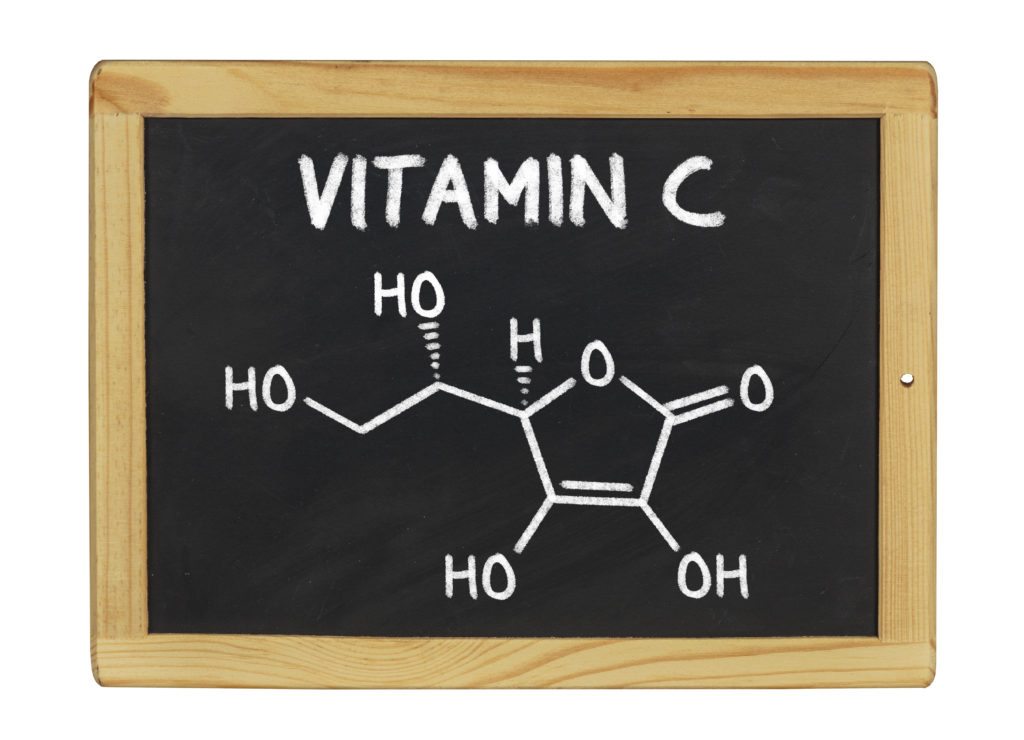Food is one of the key requirements for our healthy existence, and ideally we just eat things that taste good and are good for us. We all have a different relationship with food owing to our cultural heritage, lifestyle, and belief systems around food, said Dr. Cathy Kapica, Certified Food Scientist and science communicator for the Institute for Food Technologists and CEO of The Awegrin Institute.
Finding the right balance of foods should be a straightforward process, and there is no shortage of dietary, nutritional, and other advice to help us make better food choices.
A number of diet and nutritional websites offer a variety of information tools to help inform better food choices. But the nutrition information underlying these sources of information and guidance is not as clear as one might expect from a casual examination of the nice rounded numbers associated with the various nutritional components of food.
In fact, some of this information can be downright misleading if one does not dig a little deeper into the way in which nutrition information is gathered and managed. Health advice is often doled out more from belief systems than solid scientific evidence, argued Kapica.
There can be considerable variability in the nutritional content of many foods based on how they were grown, when they were harvested, how long they were stored, and how they are cooked before reaching our plates, said Charlene Rainey, President at Food Research, Inc.
Things can be further complicated by the ways that food samples used for doing nutritional analysis are gathered, the analytical techniques used, and the math used to fill in the databases.
And despite our significant scientific advances, the nutritional properties of most of the compounds found in food are still poorly understood. The nutritional properties of foods have been well documented for a little more than about 140 nutrients, but James Harnly Director of the Food Composition Laboratory at the USDA said that foods can have over 40,000 different compounds.
The latest research suggests that many of these may have health promoting properties, but solid scientific evidence only supports a strong link with about 140 of these compounds called nutrients.
Harnly said a nutrient is a compound for which our health will suffer when we don’t get enough of it for a period of time. For example, sailors at sea have been known to suffer from scurvy when they go too long without vitamin C. Some of these, our bodies can create by processing other ones, but others like minerals have to be consumed by our food.
Basic research into the nutritional properties of food first took off in the mid 1800s. Then in 1973, the US Department of Agriculture put into place the first nutritional assessment program for tracking about 40 nutrients deemed important for human health.
As part of this process, they created the food composition database, which is now used by nutritionists, dieticians, web services and mobile applications to help people understand the nutritional properties of their food.
The high cost of precision
Getting accurate information is a costly and time consuming process. As a result, many of the numbers listed in the food composition database were gathered twenty years ago.
The kind of research required to evaluate the changes and variations across foods is both time consuming and costly. A basic analysis of the top nutrients can cost $800-1000 said Rainey who recently completed a survey of about 300 different samples of potatoes, which cost about $250,000.
The costs grew to over $10,000 per sample for researchers curious about the more exotic nutrients and potential nutrients like isoflavones. As a result, researchers have a dearth of the data on the variability of the 40,000 different compounds known to occur in foods.
But this data is nonetheless useful. Gary Beecher, former director of the Food Composition Laboratory at the USDA, said,
Substantial nutrient information is already presented on the Food Label of each food and the USDA releases online yearly updates of their complete compendium of food composition data. While these data may not be exactly what is in the food being produced/consumed, nonetheless they are very good estimates.
But there is a cost/benefit consideration involved in ensuring accuracy. Beecher observed,
Until producers/consumers demand more precise data (benefit), it is doubtful there is justification to substantially change the current system (cost). While we in the food analysis business constantly hear ‘more precise data, more precise data’, in reality only a few consumers read Food Labels.
Beecher said that the measurement technology has greatly improved for food analysis with the advent of Certified Reference Materials for foods. This has been a concerted effort in developed countries between food analysts and the Metrology group of the respective countries, e.g. in US, National Institute of Science and Technology.
These reference materials make it easier to evaluate and calibrate new analytics techniques. The concept was taken from the steel industry for the accurate measure of iron and other elemental content of various commercial steels.
Beecher also sees significant advances in new nutritional analysis technologies like chromatography and spectrometry to increase accuracy, precision, and speed of analyses and thus reduce cost. The down side is that many more components are being quantified per ‘run’ thus the cost per ‘run’ is high, yet cost per analyte has decreased.
Introduction of solid state electronics into spectrophotometers have lead to versatile monitors with high stability, sensitivity, and a wide range of applications.
Lies, damn lies, and statistics
While this data does do a good job of helping us to get a better sense of the relative abundance or scarcity of specific nutrients in our diet, there are some dangers to taking the numbers too literally. Nutritional sites tend to provide an over abundance of information, which is easy to overwhelm people. It’s easy overlook the standard deviation associated with these numbers, which can vary quite a lot.
For example, Rainey points out that the vitamin C content of a serving of potatoes can vary from nearly 100% of the recommended daily allowance down to zero, based on how long the potatoes were held in cold storage. Interestingly the vitamin B content grows over the same duration. This is significant says Rainey, because Americans get a considerably portion of their Vitamin C from potatoes.
The cultivars of foods can also contribute to significant variation of nutrients said USDA’s Harnly. For example, research by Elizabeth Jeffery at the University of Illinois on Broccoli found that the vitamin A, C, and E could vary by as much as 10-fold between different broccoli strains.
And it’s not just the micronutrients that change across different samples of food. Macronutrients like fats and sugars can vary quite a bit as well. For example the fat content of avocados and the sugar content of citrus tends to go up over time depending on how long they stayed on the tree, and how long they were stored.
Fallacies of armchair science
Websites and blogs may be tempted to do some arm chair analysis about the meaning of nutrition data without taking into account the rigorous process required to come to accurate conclusions argued Rainey.
She notes that an organic farmer might test one potato to find a much higher vitamin C content. This might lead to the conclusion that their produce is more nutritious than what is on the market.
But this can be misleading since the nutritional properties of those potatoes might change the longer they are stored. The nutrient levels of samples can also vary significantly based on the moisture content. Rainey said that people really need to consider at least 20 different nutritional analysis samples to arrive at any valid conclusion about the differences between growing techniques.
Another problem with doing arm chair science about changes in the nutritional properties of foods is that the methods can change, said Harnly.This can be due to improvement in the analysis technology and techniques or different metrics.
He said that many people conclude that modern food is less nutritious when they see changes across different years or in the databases maintained in different countries. The old method for analyzing vitamin A content was based on color while new methods, which enable more precision, sometimes only show 1/10th the levels of vitamin A for the same samples.
There are also differences based on whether a source is listing International Units, Retinol Equivalents, or Retinol Active Equivalents.
Keeping up with change
Websites, blogs, and mobile applications that reference food information from other sources need to be diligent about keeping up with changes to the information owing to new discoveries and changes in the ways in which food is processed, said Rainey.
For example, she noted that many food blogs inaccurately portrayed the glycemic index of dates as being 103, which suggests that they are a food that should be avoided by diabetics and others concerned about spiking their blood sugar. This is actually impossible noted Rainey, since the index only goes up to a hundred, and the latest research indicates that dates have a glycemic index of about 42, which is actually pretty low. In fact, Rainey recommends dates as one of the few sweet foods that might be suitable for diabetics.
She said that she reached out to many of these sites to correct this inaccuracy, but found it difficult to get them to update their information.
Deeper digging revealed that this misleading information was inadvertently published by some researchers in Australia, who have since corrected their mistake. But apparently many websites never caught this memo.
Other nutrition information can vary based on food formulation. IFT’s Kapica noted that many dietary information sources on the Web are still discouraging consumers to stay away from French fries owing to concerns about high content of polyunsaturated fats. But this advice ignores changes made nearly a decade ago to remove these fats from leading fast food chains like McDonalds.
When food is not your friend
Lisa Harnak, Professor and Director Nutrition Coordination Center, School of Public Health, University of Minnesota, a shortcoming for most food producers and Websites is the information they provide about problematic compounds such as toxins, anti-nutrients, and allergens to improve dietary choices.
The USDA database does manage to provide some basic information about nutrients people need to limit. The FDA is responsible for managing information about other potentially harmful compounds that are not also nutrients. There are also a variety of toxins that can occur naturally in foods, which are often poorly documented.
Many compounds including nutrients like the sodium found in salt and some fats produce adverse health effects in people at the levels commonly eaten in modern diets. Others like vitamin A can also produce adverse effects for those eating a lot of exotic foods like too much liver.
Websites and blogs about what not to eat are starting to take off. Many of these are poorly rooted in scientific research and can offer misleading advice to consumers. Some of the different ways of characterizing foods that people may want to avoid or limit include toxins, allergens, and anti-nutrients.
A toxin is any compound that can cause an adverse harmful health impact in high enough doses. But in small doses, some toxins actually have beneficial properties, noted Harnly. For example, the glucosinolates in broccoli and other vegetables can be toxic. But in small doses, these compounds seem to improve a person’s immune system.
An allergen is a compound that can cause a sometimes fatal allergic reaction. At the moment, the FDA only requires notification on labels about five well-known allergens including nuts, soy, eggs, dairy, and wheat. Nearly sixty years ago, allergist Dr Arthur Coca suggested that we could identify dozens of different allergens big monitoring for slight changes in our heart rate.
An anti-nutrient is a compound that can interfere with the absorption of nutrients consumed in the diet. For example, many types of un-germinated seeds contain compounds called phytates that can interfere with the absorption of iron, said Harnly.
Harnly pointed out that many people suffering from problems they might associate with wheat might also be reacting to the aflatoxin caused by fungi, which can grown on peanuts, wheat, and other grains.
In fact, the risks can be higher with organic sources that have not been treated with fungicides. Problems associated with wheat can also be caused by its effect on blood sugar, complications with heart medications, or complications with the yeast often used in making wheat products.
Improving for nutrition reporting
Health conscious consumers want quick and easy ways to choose foods that match their nutritional concerns, said the Nutrition Coordination Center’s Harnak.
The Nutrition Facts panel (required on all packaged food products) is somewhat helpful. However, the label doesn’t include all the nutrients of interest to people. For example, added sugars and omega 3 fatty acids aren’t included on the label.
But Harnak believes that most sites and nutrition labels do a fair job of reporting. “ But, the websites generally fall short when it gets to nutrients beyond those found on the nutrition facts panel,” she added.
In some ways, the wealth of information could actually be causing more confusion making it more difficult for consumers to make the simple choices.
Phyllis Stumbo a bionutritionist at the University of Iowa involved in nutrient reporting for over 30 years said,
We know that consumers are so over-saturated with information that this information is often overlooked or ignored. Then going beyond this even the recommendations are too often challenged leaving the consumer at a loss at how to utilize the information. I predict this will be continually simplified down to things like a ‘traffic light’ label – green for things to ‘go’ ahead and eat and a red for things to ‘stop’ eating. But this assumes consumers are all alike and need the same thing.
At the end of the day, Stumbo believes that good nutrition advice should be really simple. She explained,
The USDA has tried many ways to make this easy, the 7 then 4 food groups, the pyramid, and now the plate (fill half your plate with fruits and vegetables). I think the lack of vegetable content in our diet is our worst dietary fault. And probably sugar and/or fat is/are our worst excess.
I fear that web services will be tricked by the plethora of dubious nutrition experts on the internet. Although I have to say I have not used any web services to access nutrition information and the ads one is bombarded with are criminal. Web services might recommend the numerous well researched sources of information. At the time I am very pleased with Wikipedia, the Mayo Clinic, numerous government sites like CDC, USDA FNS, CNPP, which are easy to use and provide easy to read content.
Creating the conditions for healthier eating
The science behind healthy eating is likely to benefit from improvements in better sensor, analytics techniques, genomics research.
The advent of health tracking technologies like smart watches for tracking heart rate and movement and new sensors for recording changes in blood glucose and blood pressure might help lead us to better insights into how foods are really making us feel over time.
Perhaps the future of nutrition tracking won’t be about trying to sift through more nutrition data, but in being able to make better sense of the information already available precisely when we need it. “Research shows that self-monitoring of diet is a great tool for those who are trying to lose weight or make other changes to diet for health,” said Harnak.
Sidebar: where nutrition data comes from
Phyllis Stumbo a bionutritionist at the University of Iowa involved in nutrient reporting for over 30 years, said that nutrition data entered into these databases comes in a variety of ways:
- Values are published in literature as part of research for other purposes. Data so derived is rated for quality considering how sample was collected (all seasons, multiple collection sites, use of approved chemical methods, use of quality control in the laboratory).
- Manufacturers sometimes will submit assays they have conducted for their own purposes.
- Needed values are contracted for by commercial laboratories that submit their own quality control information and who accurately assay submitted samples.
- When values are required for a new food component (say for flavones not currently in the database) samples submitted for analysis are collected according to a complex sampling strategy so that multiple areas of the US are represented and different seasons and storage and handling methods are considered.
- When a new nutrient is to be added to the database the USDA Food Composition Laboratory in Beltsville, MD will develop the requisite methodology to analyze food products and conduct some in-house measurements and contract others to outside laboratories.
Stumbo said that recently the US National Institute of Health assisted the USDA in funding needed analysis for food products and a comprehensive program was developed by USDA to improve the number and quality of data in the Standard Food Composition Database.
There are actually two national food composition databases, the “Standard Reference Database” (SR) maintained by the Food Composition Laboratory at USDA and the “Food and Nutrient Database for Dietary Studies” (FNDDS) used in the NHANES survey of food intake in the US. The FNDDS is developed from the SR and maintained by the Food Surveys Group of USDA. These databases are often used as the basis for most websites, software, and nutritional data references.
 George Lawton has been infinitely fascinated yet scared about the rise of cybernetic consciousness, which he has been covering for the last twenty years for publications like IEEE Computer, Wired, and many others. He keeps wondering if there is a way all this crazy technology can bring us closer together rather than eat us. Before that, he herded cattle in Australia, sailed a Chinese junk to Antarctica, and helped build Biosphere II. You can follow him on the Web and on Twitter @glawton.
George Lawton has been infinitely fascinated yet scared about the rise of cybernetic consciousness, which he has been covering for the last twenty years for publications like IEEE Computer, Wired, and many others. He keeps wondering if there is a way all this crazy technology can bring us closer together rather than eat us. Before that, he herded cattle in Australia, sailed a Chinese junk to Antarctica, and helped build Biosphere II. You can follow him on the Web and on Twitter @glawton.




No Comments